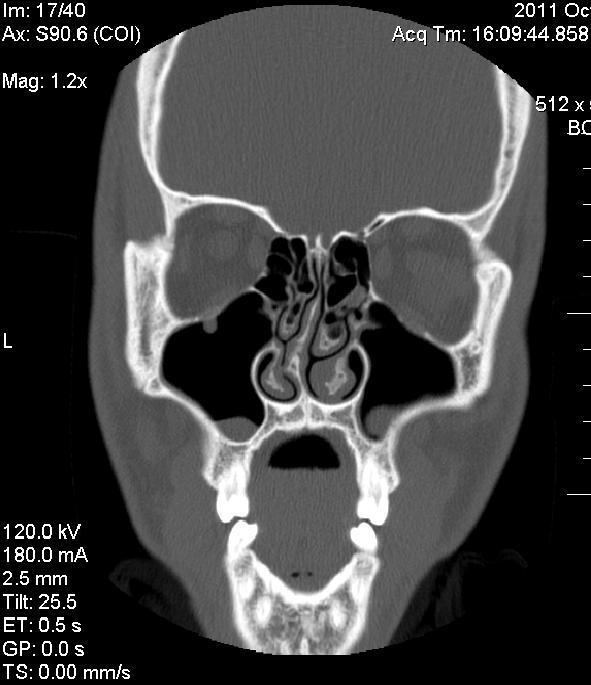ICD-9-CM 470 | ICD-10 J34.2 | |
 | ||
Nasal septum deviation or deviated nasal septum (DNS) is a physical disorder of the nose, involving a displacement of the nasal septum. Some displacement is common, affecting 80% of people, most unknowingly.
Contents
Signs and symptoms
Only more severe cases of a deviated septum will cause symptoms of difficulty breathing and require treatment. Symptoms of a deviated septum include infections of the sinus and sleep apnea, snoring, repetitive sneezing, facial pain, nosebleeds, difficulty with breathing, and mild to severe loss of the ability to smell.
The nasal septum is the bone and cartilage in the nose that separates the nasal cavity into the two nostrils. The cartilage is called the quadrangular cartilage and the bones comprising the septum include the maxillary crest, vomer and the perpendicular plate of the ethmoid. Normally, the septum lies centrally, and thus the nasal passages are symmetrical. A deviated septum is an abnormal condition in which the top of the cartilaginous ridge leans to the left or the right, causing obstruction of the affected nasal passage. The condition can result in poor drainage of the sinuses. People can also complain of difficulty breathing, headaches, bloody noses, or of sleeping disorders such as snoring or sleep apnea.
It is common for nasal septa to depart from the exact centerline; the septum is only considered deviated if the shift is substantial or is adversely affecting the patient. Many people with a deviation are unaware they have it until some pain is produced. By itself, a deviated septum can go undetected for years and thus be without any need for correction.
Causes
It is most frequently caused by impact trauma, such as by a blow to the face. It can also be a congenital disorder, caused by compression of the nose during childbirth. Another way someone could obtain a deviated septum is by repetitive cocaine use, to the point where they're getting bloody noses. Deviated septum is associated with genetic connective tissue disorders such as Marfan syndrome, Homocystinuria and Ehlers–Danlos syndrome.
Treatment
In mild cases, symptoms can simply be treated with medications such as decongestants, antihistamines, and nasal spray. Medication temporarily relieves symptoms, but does not correct the underlying condition. Non-medical relief can also be obtained using nasal strips. A cure to symptoms related to septal deviations is available in the form of a minor surgical procedure known as a septoplasty. The surgery is performed quickly (lasts roughly 1 hour) and does not result in any cosmetic alteration or external scars. Recovery from the procedure may take anywhere from 2 days to 4 weeks to heal completely. Septal bones never regrow. If symptoms reappear they are not related to deviations. Reappearance of symptoms may be due to mucosal metaplasia of the nose.
